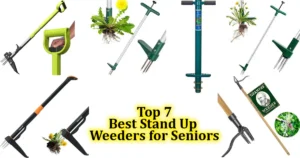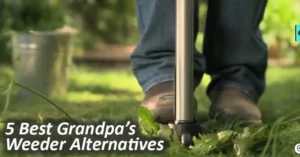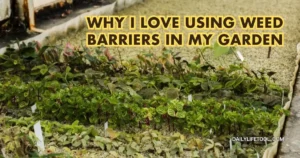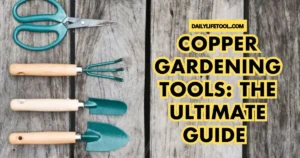Gardening is a gratifying and rewarding hobby that connects us with nature and allows us to create beautiful and vibrant spaces.
Whether you’ve been gardening for years or are just starting, these 14 most clever gardening tips and ideas will take your gardening game to the next level.
From maximizing space to nurturing potted plants, we have practical and innovative suggestions to make your garden flourish throughout the gardening season.
Table of Contents: 14 Most Clever Gardening Tips and Ideas
Awesome 14 Most Clever Gardening Tips and Ideas
Explore the 14 Most Clever Gardening Tips and Ideas for a thriving garden. Whether you’re a beginner or a pro, these tricks work wonders.
Let’s create a green paradise!
1. Retain Moisture with Mulching
One of the most effective techniques for ensuring your garden beds stay adequately hydrated is mulching.
By layering the soil with organic materials such as straw, wood chips, or compost, you create a protective barrier that reduces water evaporation and enriches the soil with essential nutrients as the mulch gradually decomposes.

The benefits of mulching extend beyond water retention; it helps regulate soil temperature, keeping it cooler in hot weather and warmer during colder spells.
Additionally, the organic matter in the mulch attracts beneficial soil organisms, contributing to overall soil health and fertility.
Mulching conserves water, improves plant growth, and promotes a thriving garden ecosystem while reducing the need for frequent irrigation and maintenance.
Clutch mulching and watch your garden flourish with less effort and water consumption!
2. Embrace Companion Planting
Companion planting is a way to grow plants that involves putting them together so they can help each other.
By strategically placing compatible plants together, you can create a harmonious garden ecosystem that fosters growth, deters pests, and enhances flavors.
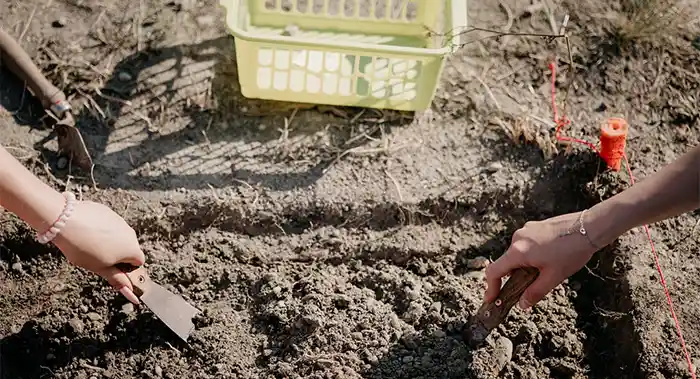
Certain plant combinations have a natural synergy, where one plant helps the other thrive.
For example, planting basil near tomatoes repels pests that would otherwise harm the tomatoes and impart a delightful flavor to the fruit.
In addition to pest control and flavor enhancement, companion planting can promote healthier soil by balancing nutrient uptake and providing support structures for climbing plants.
This age-old practice is an eco-friendly and sustainable way to maximize your garden’s potential and create a thriving and balanced environment for your plants to flourish.
So, why give companion planting a try and unlock the hidden potential of your garden?
3. Try Vertical Gardening
When space is at a premium, don’t let it deter you from gardening.
Assume the wonders of vertical gardening, a brilliant solution to make the most of limited space.
Instead of confining your plants to the ground, take advantage of vertical surfaces to create a beautiful and functional garden.

Wall-mounted planters and repurposed wooden pallets offer innovative ways to design your vertical garden.
Hang planters on walls, fences, or balcony railings to transform empty spaces into green oases.
These vertical structures allow you to grow herbs, flowers, or compact vegetables, even in the smallest spaces.
Vertical gardening offers several benefits beyond maximizing space.
It keeps plants off the ground, reducing the risk of pests and diseases, and makes tending to your garden more accessible and ergonomic.
Plus, it adds a touch of greenery to otherwise overlooked areas, enhancing the overall aesthetics of your living space.
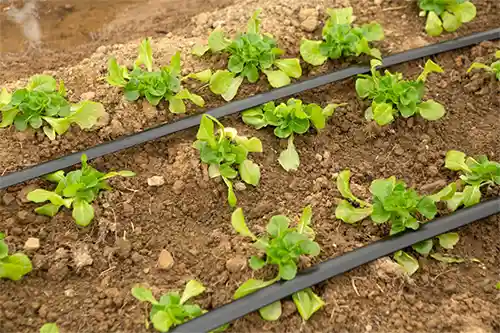
Get creative with vertical gardening and elevate your gardening experience, quite literally!
It’s a practical and stylish way to grow your favorite plants, even in the tightest spots, and turn any wall or fence into a flourishing canvas of nature’s beauty.
4. Optimize Your Potted Plants
For thriving potted plants, careful planning is the key.
First, pick the appropriate-sized containers that offer enough space for root growth.
Don’t forget to check for drainage holes to keep the dirt from getting too wet and rotting the roots.

To boost your plant’s vitality, infuse the potting soil with a slow-release fertilizer.
This ingenious approach provides a steady supply of nutrients over time, nourishing your plants without overwhelming them.
Your green companions will enjoy a consistent and balanced diet, leading to healthier foliage, vibrant blooms, and better overall growth.
These simple yet essential steps create a conducive environment for your potted plants to flourish.
From luscious indoor greens to beautiful patio blossoms, optimized potted plants will grace your living spaces with natural beauty and vitality.
5. DIY Garden Tool Organizer
Bid farewell to the frustration of misplaced garden tools with a brilliant DIY solution.
Transform a wooden pallet or a pegboard into a functional garden tool organizer that will keep your implements within reach and your gardening space tidy.
Repurpose a sturdy wooden pallet by securing it to a wall or fence.
Add hooks or nails to hang your essential tools, such as shovels, rakes, and pruners.
This clever setup saves valuable space and ensures easy access to your equipment, saving you time and effort during gardening sessions.
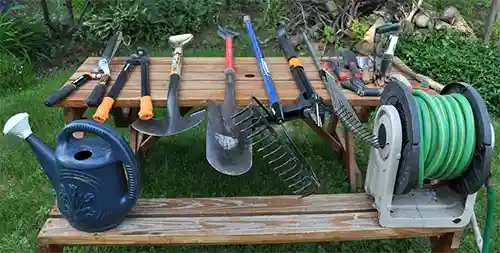
Alternatively, opt for a pegboard for a customizable and versatile organizer.
Install it on a shed or garage wall and hang your tools using various hooks and clips.
This flexible system allows you to arrange and rearrange your tools as needed, accommodating different shapes and sizes.
With a DIY garden tool organizer, you’ll never misplace your gardening implements again.
Enjoy a clutter-free and efficient gardening experience, and focus on what truly matters cultivating a flourishing and beautiful garden.
6. Eggshell Seed Starters
Discover a cost-effective and eco-friendly way to kickstart your seedlings with eggshell seed starters.
Not only are eggshells biodegradable, but they also offer valuable nutrients to nurture your young plants as they germinate and grow.
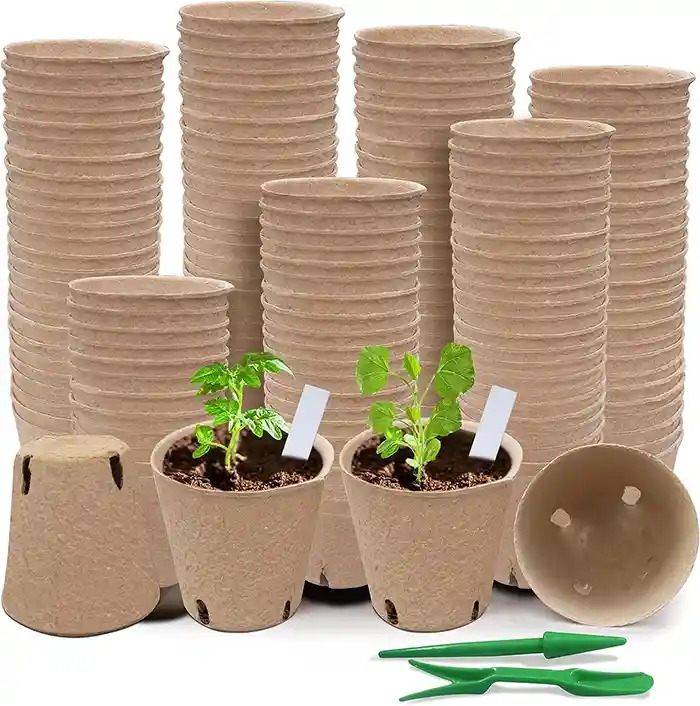
To create these tiny seed beds:
- Carefully crack the top of an egg and empty the contents for culinary use.
- Rinse and save the eggshell halves, and use a small nail or a pin to make a drainage hole at the bottom.
- Fill each eggshell with potting soil full of nutrients and plant your seeds according to the instructions on the box.
As the seedlings grow, they absorb essential minerals from the eggshells, promoting healthy development.
Once your seedlings are robust enough, transplant them directly into the ground, eggshell and all.
The shell will decompose naturally, adding extra calcium to the soil, which benefits the plants even further.
Eggshell seed starters are a charming DIY project and a sustainable way to nurture your seedlings.
By using what would have been kitchen waste, you give your garden a head start in the most natural and resourceful manner.
7. Repurpose Plastic Forks
Before you toss away those plastic forks, consider their potential in your garden.
Please give them a new life as handy miniature garden markers!
Quickly identify your various plants by writing their names on the forks’ handles and gently inserting them into the soil beside each plant.
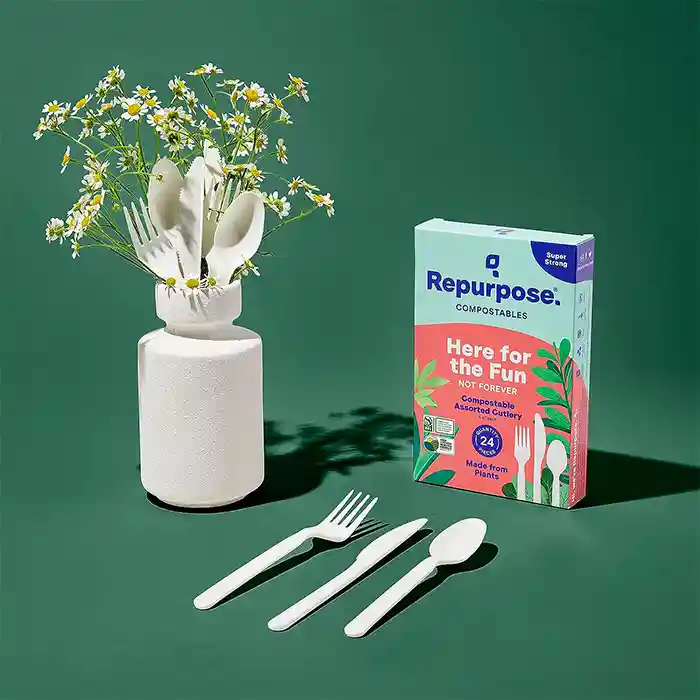
This clever and budget-friendly hack ensures you stay organized and informed about your garden varieties.
No more confusion or mix-ups each plant proudly displays its name, making gardening a breeze.
The sturdy plastic can withstand the elements and remain legible throughout the gardening season.
When replacing the forks with new plantings, wash and store them for future use.
Repurposing plastic forks as garden markers not only keeps these disposable items out of landfills but also adds a touch of creativity to your garden.
Embrace this simple yet effective idea and enjoy a well-organized and flourishing garden with a personal touch.
8. Introduce Beneficial Insects
Say goodbye to harmful pests and welcome garden allies with open arms!
Invite beneficial insects like ladybugs, praying mantises, and lacewings into your garden for natural pest control.
These tiny warriors work tirelessly to keep harmful insects at bay, reducing the need for chemical pesticides.

Ladybugs, also known as lady beetles, devour aphids, mealybugs, and other soft-bodied pests that plague your plants.
Praying mantises are stealthy hunters, feasting on grasshoppers, caterpillars, and even small rodents.
With their delicate appearance, lacewings are fierce predators of aphids, thrips, and spider mites.
Plant nectar-rich flowers like daisies, cosmos, and fennel to attract these valuable helpers.
Provide shelter and water sources to encourage them to stay and thrive.
Creating a welcoming environment for these beneficial insects fosters a natural and balanced ecosystem in your garden, where pests are kept in check without resorting to harmful chemicals.
Embrace the power of these garden defenders and watch your plants flourish under their watchful care.
9. DIY Rainwater Collection System
Maximize your water resources with a DIY rainwater collection system.
Position barrels beneath your downspouts, gathering rainwater to hydrate your garden during dry spells.
This eco-conscious approach conserves water, ensuring plants receive a natural and sustainable irrigation solution.
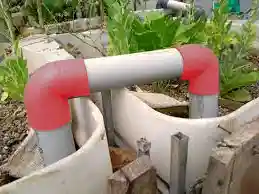
By assuming this efficient method, you reduce water waste and contribute to a greener environment.
Embrace the simplicity and effectiveness of rainwater harvesting, allowing nature’s gift to nourish your garden while minimizing your ecological footprint.
Start your DIY rainwater collection system today and watch your garden flourish, even in the driest times.
10. Create a Bee-Friendly Garden
Welcome essential pollinators into your garden by cultivating a bee-friendly shelter.
Incorporate plants like lavender, sunflowers, and coneflowers to entice bees, which play a vital role in pollination, securing the growth of your fruits and vegetables.
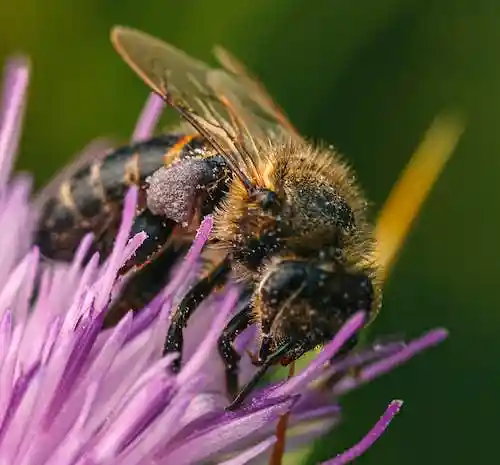
Bees are hardworking pollinators, transferring pollen from flower to flower, aiding in fertilization and fruit production.
By offering a diverse selection of nectar-rich blooms, you not only support the bee population but also enhance the productivity and yield of your garden.
A bee-friendly garden promotes biodiversity and ecological balance, creating a flourishing ecosystem that benefits all living organisms.
Embrace your role as a steward of nature, and let your garden buzz with life as bees fulfill their crucial mission.
Cultivate a harmonious coexistence with these industrious insects, and witness your garden thrive like never before.
11. Smart Garden Planning
Achieve gardening success through strategic garden planning.
Optimize sun exposure and water efficiency by carefully designing your garden layout.
Group plants with similar water requirements together, ensuring more efficient irrigation and preventing over or underwatering.

Furthermore, consider the positioning of taller plants when arranging your garden beds.
Placing taller varieties on the north side of your garden prevents them from casting shadows on smaller plants, guaranteeing equal access to sunlight for all.
Adequate sun exposure is vital for robust growth and bountiful harvests.
You create a harmonious and thriving garden ecosystem by embracing intelligent garden planning.
Your plants will flourish with the right amount of sunlight and water, and you’ll witness the beauty of nature unfolding in your thoughtfully arranged garden.
12. Composting 101
Embrace composting to transform kitchen scraps and garden waste into nutrient-rich gold for your garden.
Compost is a natural elixir that enhances soil structure, fertility, and overall plant health.
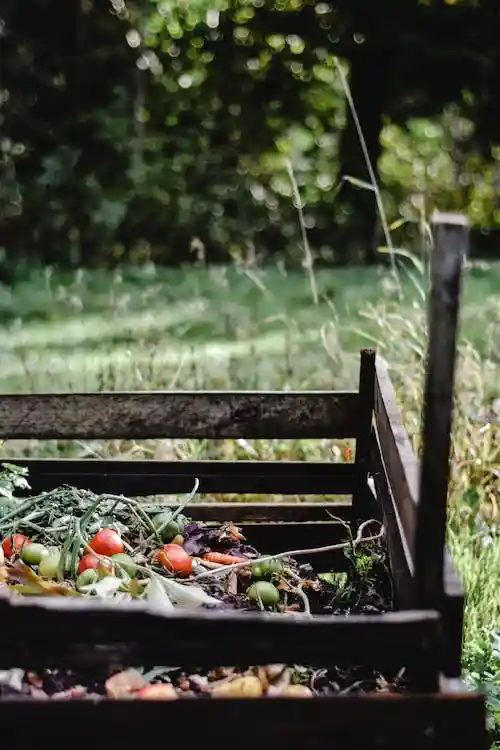
Collect kitchen scraps like fruit peels, coffee grounds, vegetable trimmings, garden clippings, leaves, and pruned branches.
Layer them in a compost bin or heap and let nature work magic.
Over time, these organic materials break into dark, crumbly compost, teeming with beneficial microorganisms.
When you incorporate compost into your soil, you improve its water retention, aeration, and nutrient-holding capacity.
This results in healthier plants, increased yields, and reduced reliance on chemical fertilizers.
Embrace composting a sustainable practice that nurtures your garden and the environment.
13. The Power of Epsom Salt
Unleash the hidden potential of Epsom salt, a gardener’s secret weapon.
Packed with magnesium and sulfur essential nutrients for plant growth Epsom salt boosts your garden’s vitality.
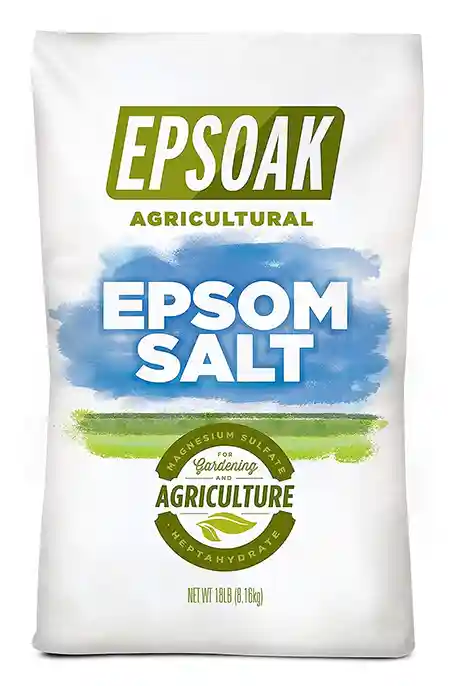
Dissolve Epsom salt in water and use it to water your plants or apply it directly to the soil.
This mineral-rich treatment promotes chlorophyll production, enhances nutrient absorption, and fortifies plant cell walls.
It benefits magnesium-loving plants like tomatoes, peppers, and roses.
Embrace the power of Epsom salt, a natural and affordable solution to elevate your garden’s health and productivity.
With this simple addition to your gardening routine, watch your plants thrive like never before.
14. Encourage Earthworms
Embrace earthworms as nature’s tireless gardeners, significantly improving soil quality with their burrowing prowess.
Boost their presence by adding organic matter, such as compost, to your garden.
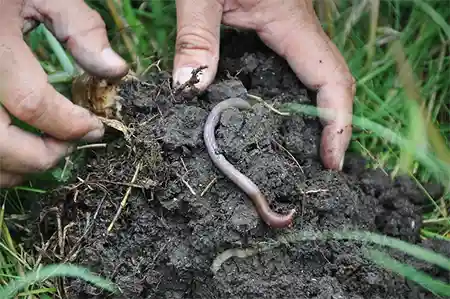
Earthworms are crucial in soil aeration, nutrient cycling, and enhancing soil structure.
As they tunnel through the earth, they create channels that improve water infiltration and root penetration.
Their castings, also known as worm castings, are rich in nutrients that benefit plant growth.
By providing a nutrient-rich environment through composting, you entice earthworms to thrive and work their magic in your garden.
These tiny soil engineers will contribute to healthier, more productive plants, rewarding your gardening endeavors.
Happy gardening with your new underground allies!
These are the top 14 Most Clever Gardening Tips and Ideas that grow your garden step-by-step.
Watch This Video for 14 Most Clever Gardening Tips and Ideas from Florida Gardeners.
Conclusion – 14 Most Clever Gardening Tips and Ideas
With these 14 most clever gardening tips and ideas, you’ll be well-equipped to take your gardening skills to new heights.
From innovative ways to retain moisture to eco-friendly practices, your garden will thrive, providing a bountiful and beautiful space to enjoy throughout the gardening season.
How to Disinfect Gardening Tools? 4 Step-by-step Tips

